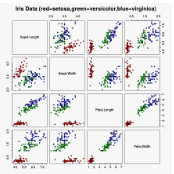The inspection-planning problem calls for computing motions for a robot that allow it to inspect a set of points of interest (POIs) while considering plan quality (e.g., plan length). This problem has applications across many domains where robots can help with inspection, including infrastructure maintenance, construction, and surgery. Incremental Random Inspection-roadmap Search (IRIS) is an asymptotically-optimal inspection planner that was shown to compute higher-quality inspection plans orders of magnitudes faster than the prior state-of-the-art method. In this paper, we significantly accelerate the performance of IRIS to broaden its applicability to more challenging real-world applications. A key computational challenge that IRIS faces is effectively searching roadmaps for inspection plans -- a procedure that dominates its running time. In this work, we show how to incorporate lazy edge-evaluation techniques into \iris's search algorithm and how to reuse search efforts when a roadmap undergoes local changes. These enhancements, which do not compromise IRIS's asymptotic optimality, enable us to compute inspection plans much faster than the original IRIS. We apply IRIS with the enhancements to simulated bridge inspection and surgical inspection tasks and show that our new algorithm for some scenarios can compute similar-quality inspection plans 570x faster than prior work.
翻译:检查规划问题要求计算机器人的动作,使其能够在考虑计划质量(例如,计划长度)的同时检查一系列感兴趣的点(POIs) 。 这个问题在许多领域都有应用, 机器人可以帮助检查, 包括基础设施维护、 建筑和手术。 递增随机检查- 公路图搜索(IRIS)是一个无一考虑的优化的检查计划设计师, 显示它能够比以往最先进的方法更快地计算出质量更高的检查计划数量级。 在本文中, 我们大大加快IRIS的绩效, 以将其应用扩大到更具挑战性的现实世界应用程序。 IRIS所面临的一个关键的计算挑战就是有效地搜索检查计划的路线图, 这是一种支配其运行时间的程序。 在这项工作中, 我们展示了如何将懒惰的边缘评估技术纳入\iris的搜索算法, 以及当地图发生本地变化时如何再利用搜索努力。 这些增强不会损害IRIS的兼容性最佳性, 使我们能够比最初的IRIS系统应用快得多的检查计划。 我们应用IISS 70 将一些新的质量检查计划比原始的检查计划更迅速。 我们应用了IRIS 的高级的检查和前的检查计划, 展示了IIS 5 模拟的升级的检查和升级。



